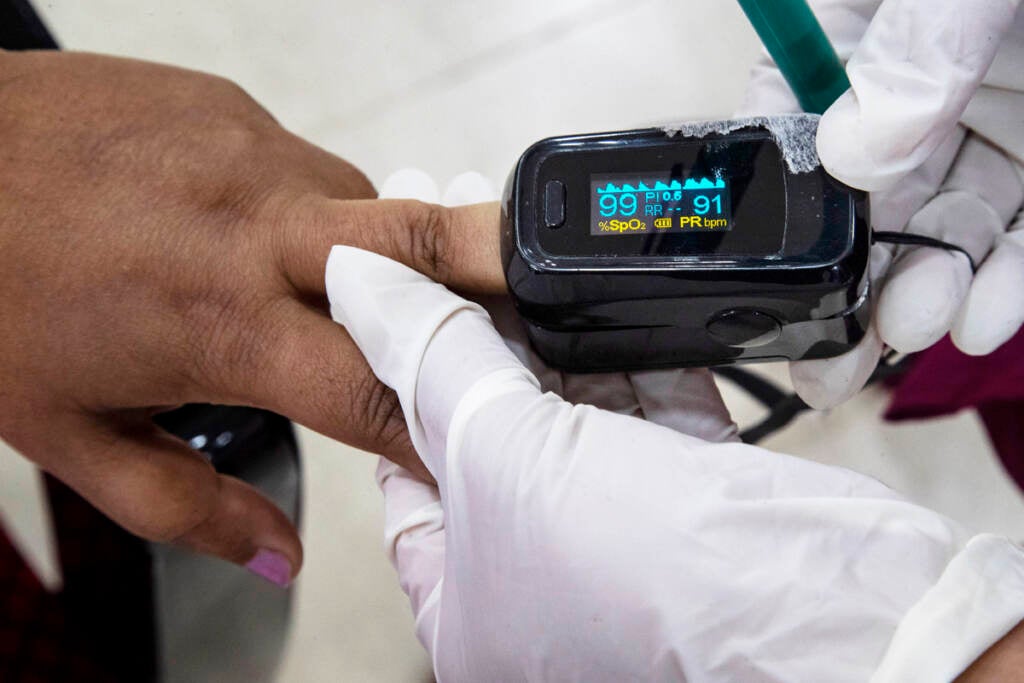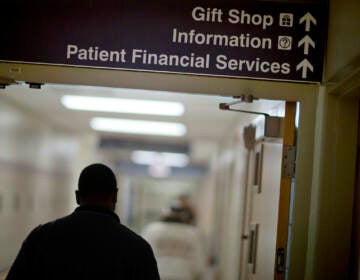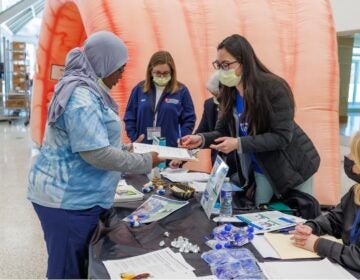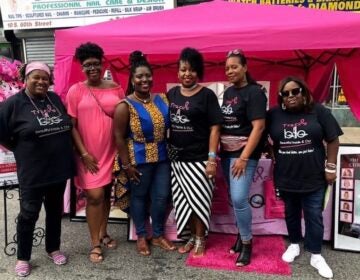How the pulse oximeter became infamous on TikTok
Med student Joel Bervell found an unlikely place to educate both health care providers and patients about racial biases that are affecting care.

Medical student Joel Bervell shares important health information with Black followers on Tik Tok. (Courtesy of Joel Bervell)
This story is part one of a three-part series, From exclusion to inclusion: A Black medical student chronicles his efforts to bring health disparities to light. Read parts two and three.
When I decided to apply to medical school, I already knew I would be entering a field that was still grappling with issues of racial bias and inequality. Throughout my undergraduate education at Yale, I had thrown myself into classes that explored health disparities. In “Media and Medicine,” I learned about the history of unethical medical experiments like the Tuskegee Experiments. In “Bioethics and Law” we examined the stories of individuals like Fannie Lou Hamer, who in 1961 went to the hospital for the removal of a small uterine tumor and instead was given a hysterectomy without her knowledge or consent.
Despite this foundation, when I started medical school at Washington State University in 2019, I was still caught off-guard by how deeply modern-day disparities were ingrained in medical education. Our textbooks, for example, often only used one standard biological model; that of a white, able-bodied male. And the medical language I read on the hospital discharge summaries that I would give to patients were far from inclusive; using terms like “redness” and “pale” which often didn’t reflect patients like myself who have darker skin. I wondered how these issues were impacting the medical education we were receiving — and how it would affect the care we would deliver to our patients — patients of all racial and ethnic backgrounds. The answer to that question became clear to me during the COVID-19 pandemic.
In December 2020, eight months after my school had gone entirely virtual, I was lying in bed one evening, scrolling through Instagram. I came across a post with a screenshot of an article from the New England Journal of Medicine (NEJM), titled “Racial Bias in Pulse Oximetry Measurement.” This article shed light on something that had slipped under the radar of my medical education: a disparity with the pulse oximeter — that could have dire consequences.
Pulse oximeters are small devices that can fit on your finger and are ubiquitously used in hospitals and by many patients at home to measure their blood oxygen saturation levels. They shine light through a patient’s skin to measure how much oxygen is in the blood.

Blood loaded with oxygen absorbs more infrared light while blood with less oxygen absorbs less infrared light. These devices were especially important during the pandemic — when this measurement often signaled whether a patient’s care needed to be stepped up. But they have a secret. As the article pointed out, pulse oximeters were three times as likely to report inaccurate, overestimated oxygen saturation levels in Black patients compared to white patients. That meant that a Black patient who had low oxygen levels (called hypoxemia) could potentially still have normal readings because melanin, the pigment that makes skin darker, also absorbs light from these devices.
I was shocked. Despite already being a year and a half into medical school, I had not heard anything about this disparity before. How could a device that was so commonly used in hospitals work so poorly for patients with darker skin? And what were the health implications behind a disparity like this? Had this device not been tested on patients with darker skin? Had anybody tried to fix this? I was intrigued and horrified and started to do more digging.
What I discovered was even more unsettling. The findings on the pulse oximeter disparity were not new. In fact, researchers had been raising the alarm about the issue for decades. And yet, the problem persisted. I realized that if I hadn’t heard about this before, my peers in med school wouldn’t have either. So, I did what seemed unconventional at the time, but seemed like one of the best mediums for spreading information. I made a TikTok video.
I began the clip by asking my audience: “What Does Racial Bias in Medicine Look Like?”
@joelbervell Here’s an example of racial bias in medicine. #greenscreen #healthcare #medicine #race #bias #doctor #black #blm #covid19 #education #premed #science ♬ Blade Runner 2049 - Synthwave Goose
In 30 seconds, I explained the issues around pulse oximeter readings in patients with darker skin tones, how it impacted Black patients, and why it was significant given the ongoing COVID-19 pandemic. I posted the video, thinking that it would get a few thousand views. Within 24 hours, however, the video had received over half a million views and thousands of comments. Health professionals were expressing that they had never heard about this before. Patients left notes wondering if this had happened to a loved one or even themselves.
The overwhelming response made me realize that there was a need for this kind of information — and that I should try to shed light on more racial biases in medicine. Since posting that first video, I’ve been dubbed the “Medical Mythbuster” for creating hundreds of videos about the biases that aren’t taught in medical school. I’ve discussed how until 2021, physicians used race-based equations that assumed that all Black patients have better kidney functioning and worse lung functioning than other races. Or, how psychologists used “race-norming” on the neuropsychological tests of retired football players who had concussions.
What I could never have imagined from posting these videos was their impact on empowering patients. A few weeks after I posted my video about pulse oximeters, I received a direct message from a young man who had used my video to advocate for himself. During the midst of the COVID-19 pandemic, he wasn’t feeling well and went to the emergency room. The hospital didn’t want to admit him because his oxygen levels seemed normal. He had seen my video a few weeks before, and knew it was possible that pulse oximeters could read inaccurately. So, he showed the video to the doctor, and they reversed course and decided to admit him. In his message he said, “The only reason I’m here is because I didn’t take ‘no’ for an answer. Thank you.”
When it comes to the pulse oximeter, progress is being made. In February 2021, the FDA issued a safety communication about the limitations of the pulse oximeter and in November 2022, the FDA convened an advisory committee to provide advice and recommendations to the FDA on regulatory issues. Black scientists are also leading the charge to develop a next-generation pulse oximeter that works well on all skin tones.
The updates to the pulse oximeter over the past three years have been significant. As a future health care practitioner, I’m doing all I can to continue educating patients and peers about the overlooked disparities in medicine. But there is still much work to be done to address the broader issue of racial bias in medicine, and it starts with education and awareness.
This story is part one of a three-part series, From exclusion to inclusion: A Black medical student chronicles his efforts to bring health disparities to light. Read parts two and three.
Joel Bervell is a Ghanaian-American medical student studying at Washington State University, Elson S. Floyd College of Medicine. Across social media, Joel is better known to his over 800K followers as the ‘‘Medical Mythbuster” for creating content that is tackling biases in healthcare and other industries. Follow him on Instagram, Twitter and TikTok @joelbervell.
Support for WHYY’s coverage of health equity issues comes from the Commonwealth Fund.
WHYY is your source for fact-based, in-depth journalism and information. As a nonprofit organization, we rely on financial support from readers like you. Please give today.






